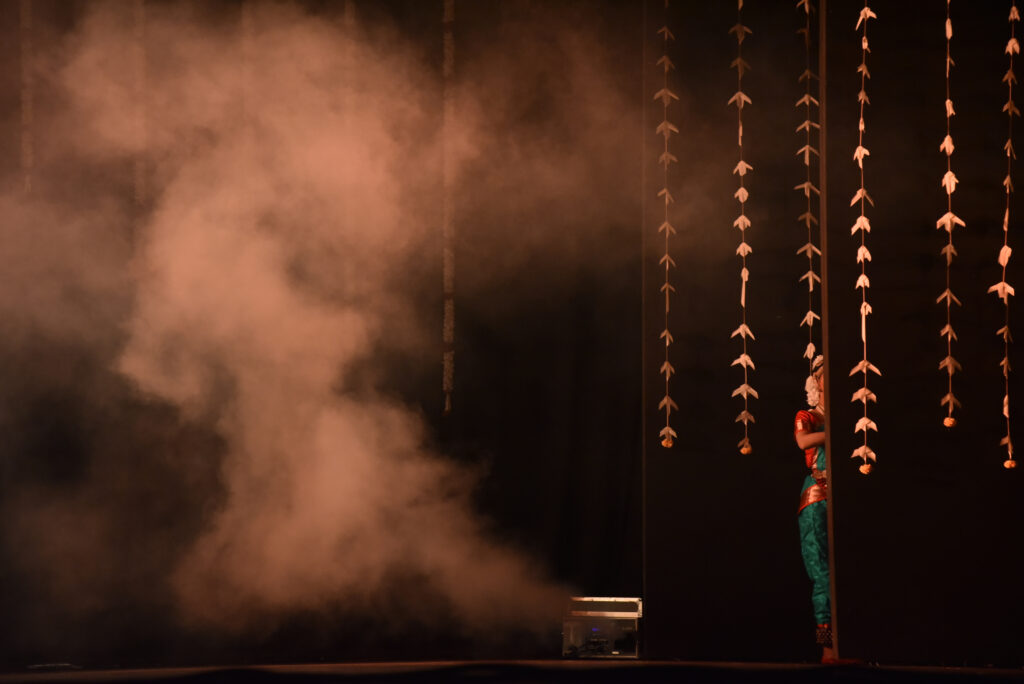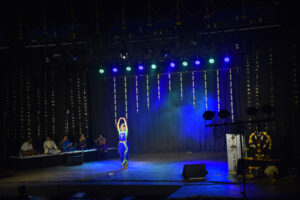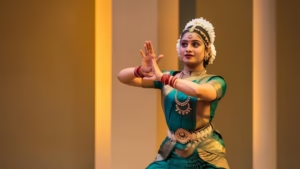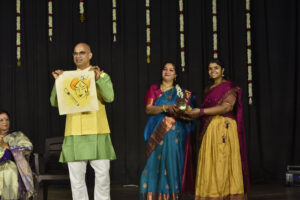Planning an arangetram ceremony is no small task. It’s a deeply personal milestone in a dancer’s life that requires months of dedication, coordination, and emotional investment. From choosing the perfect arangetram dress to coordinating musicians and finalizing choreography, there are countless moving parts. That’s where a detailed arangetram checklist becomes essential.
If you’ve been wondering what is arangetram ceremony, it marks the debut solo performance of a Bharatanatyam dancer—a graduation guided by years of training and the blessing of the Guru. This ceremonial debut is rich in tradition, rhythm, and devotion. For a smooth experience, preparation must begin almost a year in advance.
Here is your ultimate arangetram checklist for 2025, designed to make the journey toward your bharatanatyam arangetram stress-free, memorable, and spiritually fulfilling.
1. How to Plan Arangetram / Checklist
Every dancer’s arangetram ceremony journey is different, but the foundation remains the same: devotion, discipline, and structure. Begin by sitting down with your Guru to set a tentative date. This date will become your goalpost for all preparations.
Create a calendar with milestones leading up to the event. Assign responsibilities to family members or friends if possible. Planning early helps ensure that everything—from your arangetram dress to stage lighting—is done thoughtfully, without last-minute stress.
Keep a physical or digital arangetram checklist handy to track each step as you go. Break it into monthly goals and use the timeline below to guide your preparations.
2. 8 Months Before
- Finalize your bharatanatyam arangetram date with your Guru. Ensure it doesn’t clash with school or major events.
- Book the performance venue and check for availability of facilities like stage lighting, green rooms, and seating arrangements.
- Shortlist musicians and orchestra. Confirm their availability. This usually includes:
- Nattuvanar (dance conductor)
- Vocalist
- Mridangam player
- Violinist or flutist
- Nattuvanar (dance conductor)
- Discuss your repertoire with your Guru and start preparing the items for the performance. Common pieces include Alarippu, Jatiswaram, Varnam, Padams, Tillana, and Mangalam.
- Book professional photographers and videographers. High-quality visual documentation is a must for your once-in-a-lifetime arangetram ceremony.
3. 6 Months Before Arangetram
- Finalize and order your arangetram dress (or multiple dresses if you plan to change during the performance). Traditional silk Bharatanatyam costumes are custom-stitched and require fittings.
- Order dance jewelry sets (temple-style), flowers (jadai and kunjalam), hair accessories, and ghungroos.
- Book a makeup and hairstyling artist experienced with classical Indian dance.
- Begin rehearsing regularly. Prioritize stamina, facial expressions (abhinaya), and synchronization with rhythm (thalam).
- Start practicing with recorded music until the orchestra becomes available for live sessions.
- Choose a stage backdrop and decor. Many dancers opt for temple-themed or classical Indian designs.
4. 3 Months Before Arangetram
- Continue intense rehearsals. Your Guru may increase the number of weekly classes.
- Start internalizing lyrics and meanings of each piece, especially Padams and Varnam.
- Coordinate with the orchestra for your first live rehearsal session. Begin practicing with live music at least once a week.
- If your arangetram dress has arrived, try it on to check fitting and alterations.
- Design your arangetram invitation cards or digital invites. Include date, time, venue, and RSVP info.
- Design and print your program brochure. It should include the performance lineup, Guru bio, orchestra credits, and a personal message from the dancer.
- Plan seating arrangements and backstage logistics.
- Finalize the anchor/emcee who will introduce each item on stage.
- Begin writing your thank-you speech and notes to your Guru, parents, and musicians.
5. One Month Before the Arangetram
- Increase practice duration to simulate actual performance length (2.5 to 3 hours).
- Do multiple full-length rehearsals with complete costume and jewelry to check comfort, transitions, and stage movements.
- Conduct a mock performance in front of a small group for feedback.
- Coordinate final timings with the emcee and create a detailed run-of-show.
- Confirm RSVP count and share numbers with the venue for seating and refreshments.
- Distribute or email arangetram ceremony invites and collect confirmations.
- Confirm makeup and hairstyling time slots.
6. 2 Weeks Before the Arangetram
- Begin light stretching and wellness routines to avoid injuries or fatigue.
- Practice full facial makeup application with your artist to avoid allergic reactions.
- Steam or iron costumes and organize them in order of appearance.
- Conduct one or two full-stage rehearsals, if possible, at the performance venue.
- Finalize your backstage team for costume changes, jewelry assistance, water supply, and cue monitoring.
- Practice thank-you speech aloud. It should be clear, heartfelt, and concise.
7. 1 Week Before the Arangetram
- Do at least two run-throughs of the entire program with the live orchestra.
- Confirm arrival times with all musicians, technicians, and photographers.
- Pack an emergency kit: safety pins, extra ghungroos, bobby pins, bandaids, tissues, water bottles, sewing kit, deodorant, and snacks.
- Test lighting and audio at the venue. Make sure your nattuvanar is comfortable with the mic setup.
- If you’re wearing multiple arangetram dresses, assign someone to assist with the costume change backstage.
8. The Previous Day of Arangetram
- Rest well. Avoid vigorous practice; instead, meditate and go over your items mentally.
- Lay out all costumes, jewelry, and accessories in the order of performance.
- Label your makeup kit, jewelry box, ghungroos, and safety supplies.
- Hydrate throughout the day and eat light.
- Call your Guru and team to re-confirm arrival times.
- Sleep early, allowing for at least 8 hours of rest before the big day.
9. The Day of Arangetram
- Wake up early, have a light breakfast, and start getting ready at least 4–5 hours before showtime.
- Hair and makeup can take up to 2 hours—ensure this starts well in time.
- Dress in your first costume and do a warm-up session.
- Light a lamp at home or backstage for divine blessings.
- Arrive at the venue with your team and check that all backstage arrangements are in place.
- Go over your intro speech, final items, and emotions behind each dance. Trust yourself—you’re ready.
- Thank your parents, Guru, and musicians in advance for their love and support.
10. Five Hours Before
- Enter full performance mindset. Avoid distractions and limit conversation.
- Apply final touches to makeup and jewelry. Double-check ghungroos.
- Change into your first arangetram dress and get mic-checked if needed.
- Do focused breathing exercises to calm nerves.
- Practice short pieces or adavus to warm up feet and body.
- Review any spiritual ritual your Guru suggests before stepping onto stage.
This is your moment. You have spent months—perhaps years—working for this day. You’ve followed your arangetram checklist, rehearsed with heart, and honored the tradition. The performance will be your offering to the art, your Guru, your family, and the divine.
A flawless bharatanatyam arangetram is not about perfection. It’s about presence, passion, and purity. Your audience will remember the devotion in your eyes, the rhythm in your steps, and the grace in your soul.





